Garage Museum's new exhibition maps the history of Russian performance art
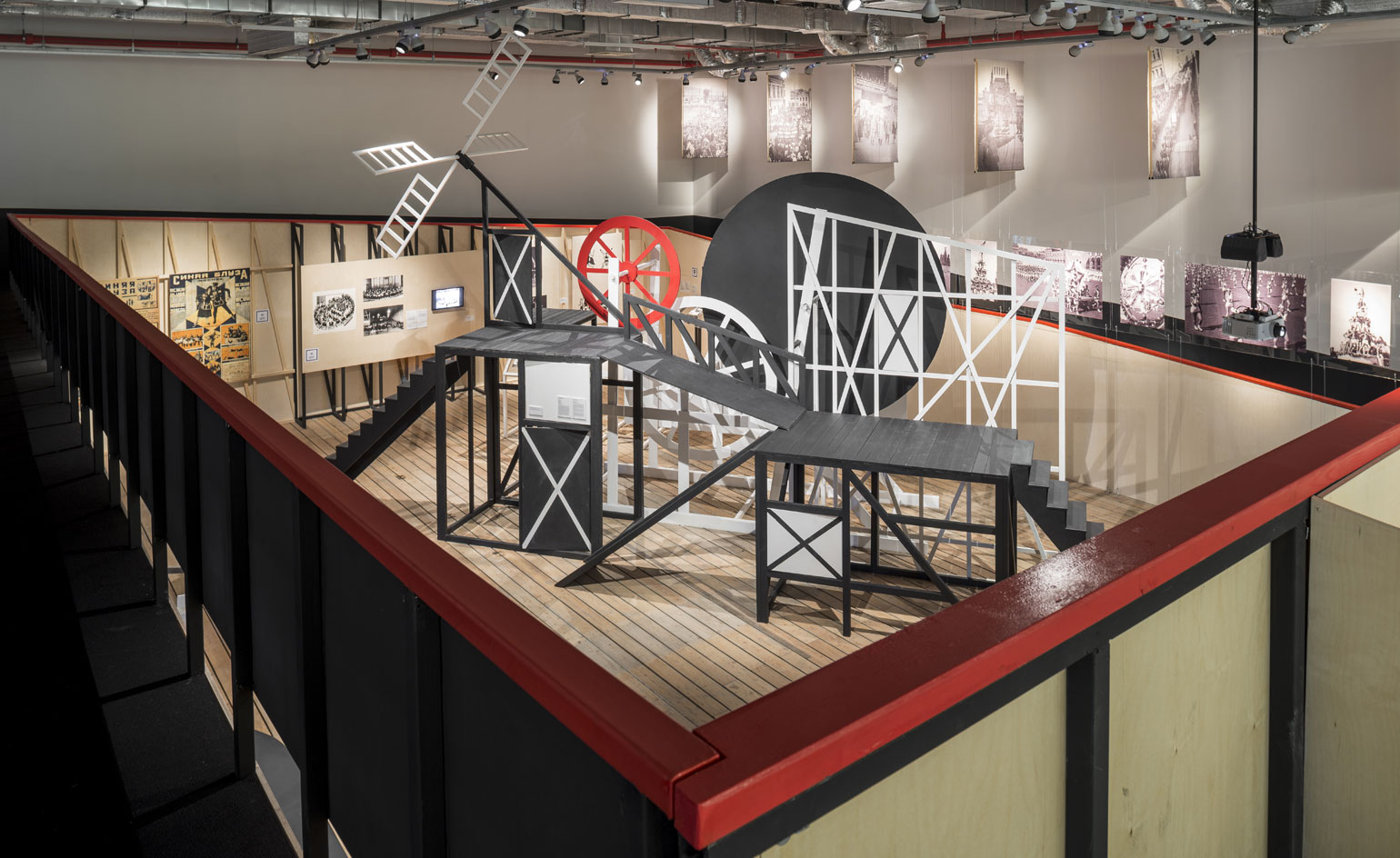
The Garage Museum of Contemporary Art in Moscow recently unveiled 'Russian Performance: A Cartography of its History' – a large-scale exhibition, curated by Yulia Aksenova and Sasha Obukhova. The exhibition covers a century of performance art from the theatrical experiments of Kazimir Malevich and Vsevolod Meyerhold to the protest works of Pussy Riot.
'Exhibitions of performance art are often monotonous and dull, with endless descriptions of the projects and low quality photographs,' says Sasha Obukhova, fellow curator of the show and head of the research department of Garage Museum. 'We aimed to make sort of a quest, so that even people who don’t care about details of history would get involved.'
That quest starts in 1913, when Russian Futurists painted their faces and went onto the streets of Moscow to 'slap public taste in the face' and ends with Pussy Riot’s performative protest at the policies of Russian president, Vladimir Putin.
Between these two tension points lies 100 years of the history of Russian performance. And the Garage show is the most academically complete examination of this art form in this country: featuring the works of more than 150 artists, including the seminal Collective Actions group, created in 1970s but active for over two decades, the 1990s aggressive ‘actionism’ of Oleg Kulik, Anatoly Osmolovsky, Alexander Brener, and their contemporary followers like the Voina group and Petr Pavlensky.
The curators have smartly created 12 thematic paths through the show, from 'slogan' and 'sound' to 'city' and 'interactive object'. They are also encouraging visitors to try their hand at performance art, a tactic that may be the most revolutionary gesture in Russia’s contemporary exhibition practice.
'Performance is the most provocative and radical art form, its history is a series of scandals and conflicts,' says co-curator Yulia Aksenova of the show. 'It is always a test of the limits of what is permitted both in art and society.'
We spoke to co-curator Sasha Obukhova to find out more...
Wallpaper*: It's not the first time that Garage Museum has dedicated a show to the history of performance art, what makes this one special?
Sasha Obukhova: Most of the previous projects were about Western experience and actual performance practices. We decided to consider the Russian history of this art form. It is also concurrent with the centenary of the first Futurist theater performances. Russian avant-garde artists revolutionised theater and drove it beyond its limits. They drew two vectors – one directed from life to art, another from art into life – and on the junction, performance emerged as the new art form.
Is there anything uniquely Russian in Russian performance art?
We found how the so called eternal 'Russian questions' – the relationship to utopia, reality and future – are reflected in the Russian performance. The Russian tradition of performance is also more inclined to an act or deed, rather than performative mastery. The second characteristic feature of Russian performance is an almost absolute neglect of corporeality or body language. With rare exception, Russian performances are bodiless and asexual, which you can see in the legacy of Collective Actions who were a very influential group.
There was an outburst of ‘actionism’ in Russian art in the 1990s. That decade is associated with aggressive actions by Anatoly Osmolovsky, Oleg Kulik, Alexander Brener and others. While in the 2000s, artists seemed to loose interest in performance. Why do you think this is?
For many reasons, but especially the growth of the art market. In Russia performance – as well as readymade and album art and diary graphics – has never been considered an academic. In other words: easily capitalised tradition. So the dominant positions were taken by more commercial kinds of art, like painting, installation, designer objects and such.
In contemporary Russia performance is the art of conflict. If we talk about performance today, we have to talk about Pussy Riot or Petr Pavlensky with their politically driven actions. But you are actually doing a museumification of the protest gesture. What the government brings to criminal court, you place into history...
We can't simply ignore the actions that are subject of public and art-critical debate. However, we found it difficult to represent them within the exhibition. Not that we encountered any ideological pressure from the authorities, but – strangely – we faced obstruction from the artists themselves.
This exhibition is made by the Garage Research department, based on the archive of contemporary art that you've collected for 20 years. Some time ago this archive became part of the museum and the foundation for the Research department, library and videotheque. What are your objectives today?
The Research department is not only about collecting and archiving information on the history of contemporary Russian art. It is even more about active propagation and education through exhibitions, publications and other forms of professional activity. And ultimately, to show the world that Russia still owns the energy of post-avant-garde experiment. Performance is action, and – as it was written in the manifest of the seminal 1990s actionist group Expropriation of the Art Territory - 'action is revolution'.

The exhibition covers a century of Russian performance art and features the works of more than 150 artists. © Garage Museum of Contemporary Art
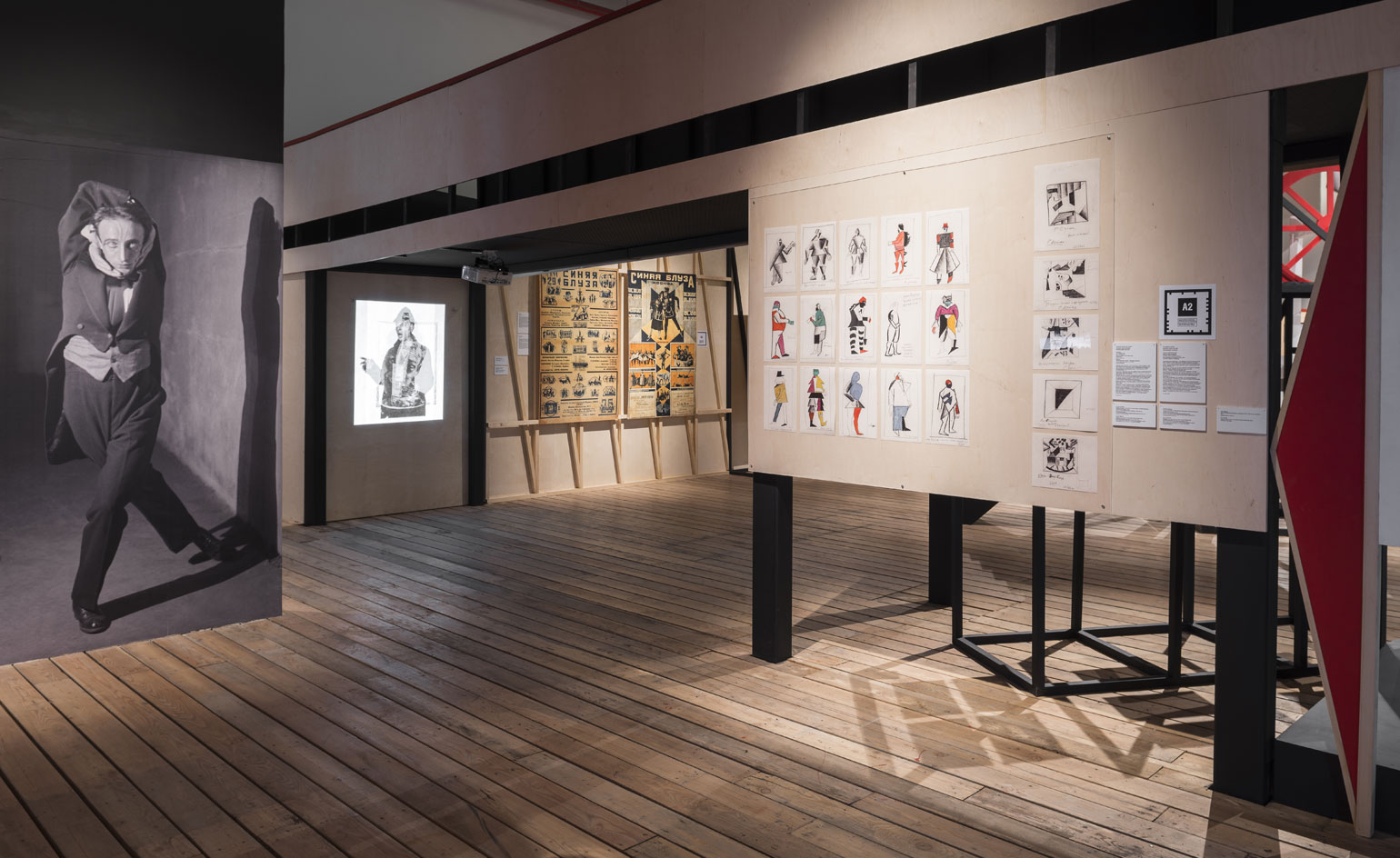
Twelve thematic paths guide visitors through the show, from 'slogan' and 'sound' to 'city' and 'interactive object'. © Garage Museum of Contemporary Art

Taking centre stage is an impressive 2014 reconstruction of the theatrical structure designed by painter and designer Lyubov Popova for Vsevolod Meyerhold's production of Crommelynck farce 'The Magnanimous Cuckold' at the Actors’ Theatre in Moscow, 1922. © Garage Museum of Contemporary Art

An interactive map of a field near Kievy Gorky village shows the locations of performaces by the seminal 1970s 'Collective Actions' group, 2008-2014. © Garage Museum of Contemporary Art

The 1990 installation 'Three Inspectors' by artists' collective 'Medical Hermeneutics Inspection' is reconstructed for the exhibition with the permission of the artists and Centro per l'Arte Contemporanea Luigi Pecci, Prato, Italy. © Garage Museum of Contemporary Art
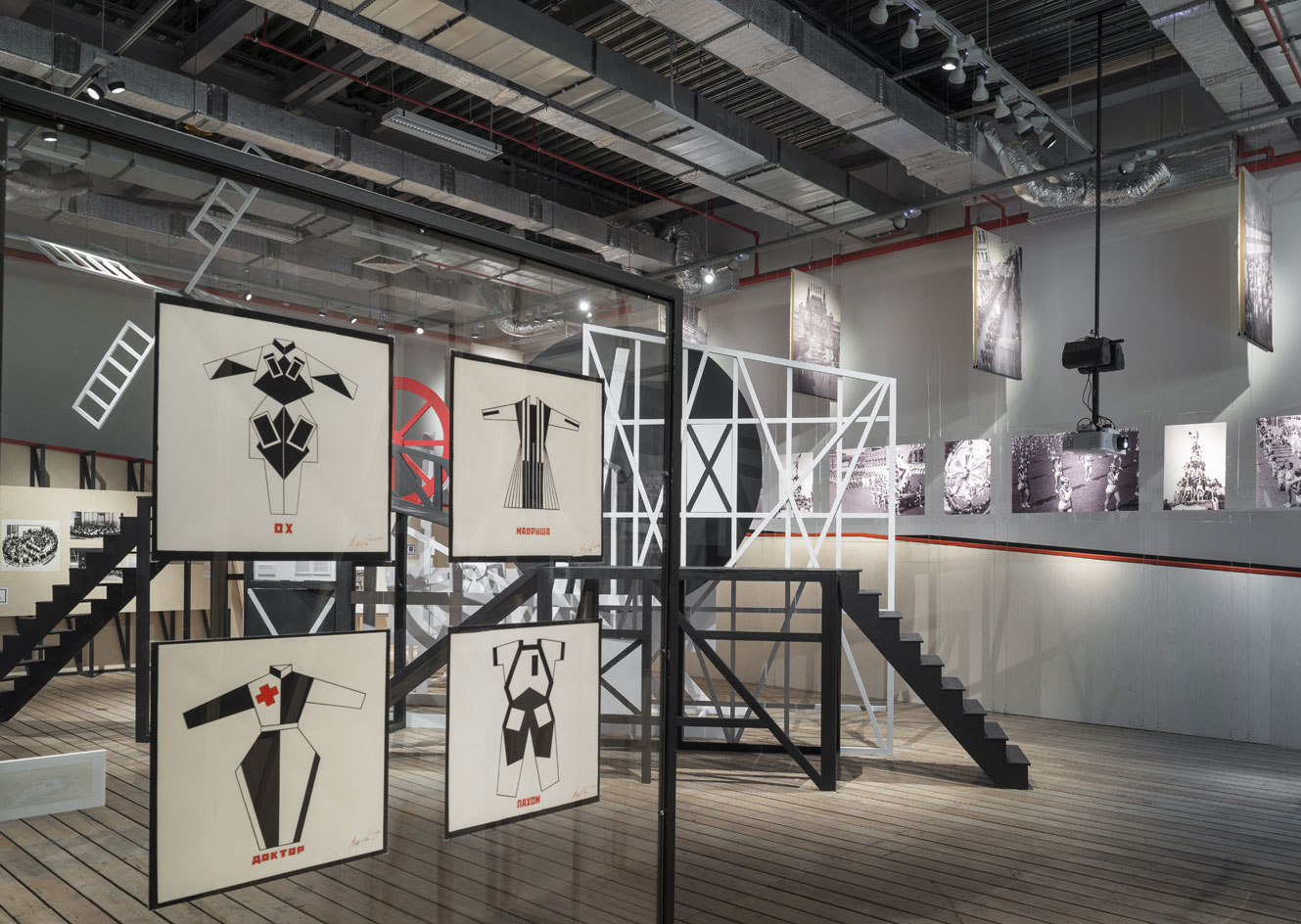
Costume sketches by Varvara Stepanova for Alexander Sukhovo-Kobylin's 'The Death of Tarelkin' directed by Vsevolod Meyerhold in Moscow, 1922, are included in the show. Originals can be seen in Moscow's AA Bakhrushin State Central Theatre Museum. © Garage Museum of Contemporary Art

The exhibition covers the 1990s aggressive ‘actionism’ of Oleg Kulik, Anatoly Osmolovsky, Alexander Brener, and their contemporary followers like the Voina group and Petr Pavlensky. © Garage Museum of Contemporary Art

Stating that 'Exhibitions of performance art are often monotonous and dull,' curators Yulia Aksenova and Sasha Obukhov wanted to present the works in an engaging and exciting way, so that 'even people who don’t care about details of history would get involved'. © Garage Museum of Contemporary Art
ADDRESS
Garage Museum
9, Krymsky Val St
Moscow 119049
Receive our daily digest of inspiration, escapism and design stories from around the world direct to your inbox.
-
 New York's members-only boom shows no sign of stopping — and it's about to get even more niche
New York's members-only boom shows no sign of stopping — and it's about to get even more nicheFrom bathing clubs to listening bars, gatekeeping is back in a big way. Here's what's driving the wave of exclusivity
-
 The diverse world of Belgian embassy design – 'style and class without exaggeration'
The diverse world of Belgian embassy design – 'style and class without exaggeration''Building for Belgium: Belgian Embassies in a Globalising World' offers a deep dive into the architecture representing the country across the globe – bringing context to diplomatic architecture
-
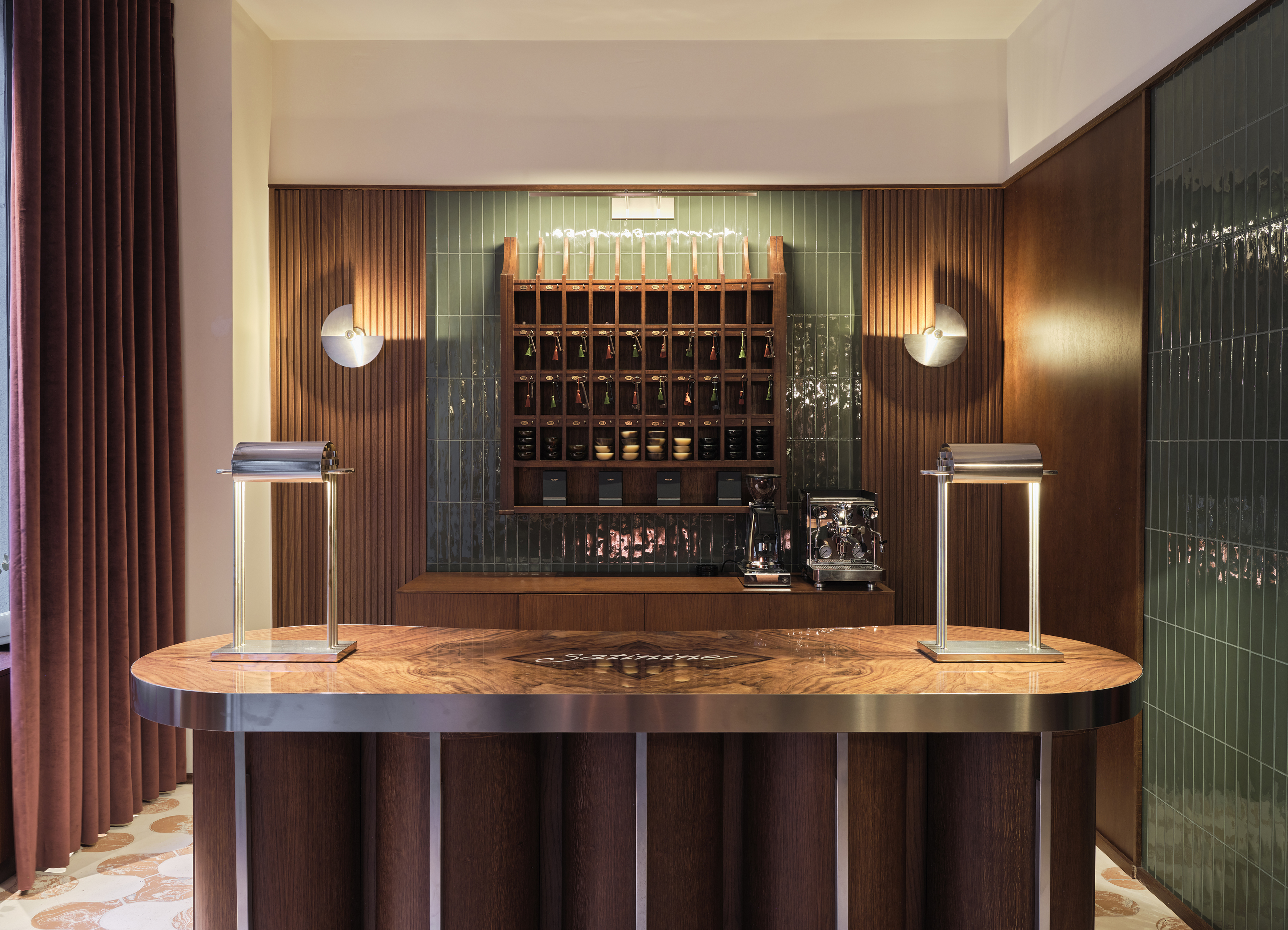 Pull up a bespoke pew at Milan’s new luxury perfumery Satinine, an homage to the city’s entryways
Pull up a bespoke pew at Milan’s new luxury perfumery Satinine, an homage to the city’s entrywaysDesigner Mara Bragagnolo fuses art deco details to bring storied Milanese fragrance brand Satinine into the 21st century
-
 Inside the fantastical world of performance artist, Darrell Thorne
Inside the fantastical world of performance artist, Darrell ThornePerformance artist Darrell Thorne straddles multiple worlds, telling stories through transformation, reinvention and theatrical excess
-
 Out of office: what the Wallpaper* editors have been up to this week
Out of office: what the Wallpaper* editors have been up to this weekThis week saw the Wallpaper* team jet-setting to Jordan and New York; those of us left in London had to make do with being transported via the power of music at rooftop bars, live sets and hologram performances
-
 Miami’s new Museum of Sex is a beacon of open discourse
Miami’s new Museum of Sex is a beacon of open discourseThe Miami outpost of the cult New York destination opened last year, and continues its legacy of presenting and celebrating human sexuality
-
 Royal College of Physicians Museum presents its archives in a glowing new light
Royal College of Physicians Museum presents its archives in a glowing new lightLondon photography exhibition ‘Unfamiliar’, at the Royal College of Physicians Museum (23 January – 28 July 2023), presents clinical tools as you’ve never seen them before
-
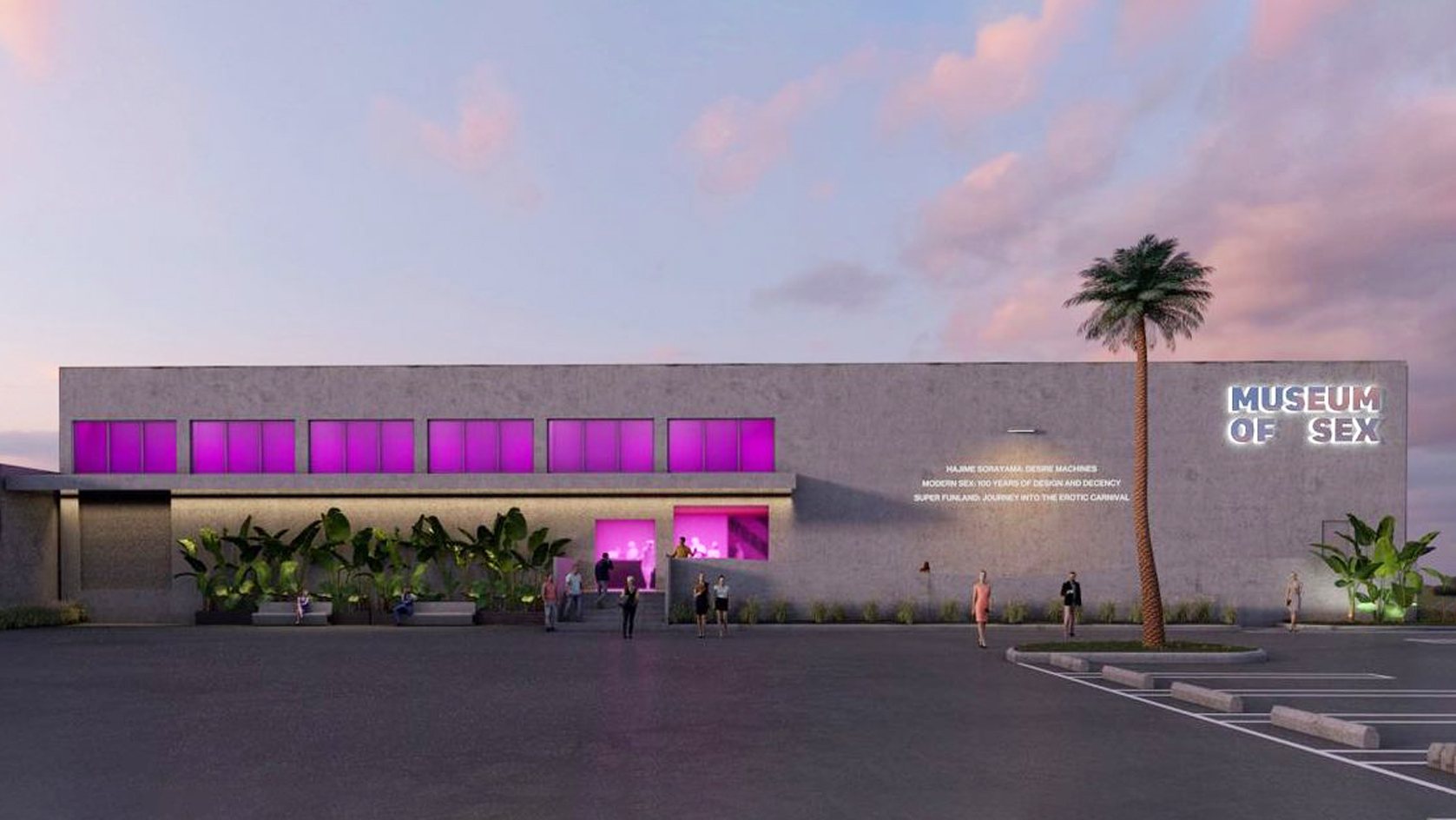 Museum of Sex to open Miami outpost in spring 2023
Museum of Sex to open Miami outpost in spring 2023The Museum of Sex will expand with a new Miami outpost in spring 2023, housed in a former warehouse reimagined by Snøhetta and inaugurated with an exhibition by Hajime Sorayama
-
 Vanessa Beecroft’s ethereal performance and sculpture exhibition explore Sicily’s cultural history
Vanessa Beecroft’s ethereal performance and sculpture exhibition explore Sicily’s cultural historyAt the historic Palazzo Abatellis, Sicily, Vanessa Beecroft has unveiled ‘VB94’, a new tableau vivant comprising a one-time performance and a new series of sculptures, the latter on view until 8 January
-
 Subversive artist Cosey Fanni Tutti on individuality and annihilating limitations
Subversive artist Cosey Fanni Tutti on individuality and annihilating limitationsFollowing the launch of her new book Re-Sisters, we speak to Cosey Fanni Tutti about conquering fear through action, stepping into the unknown, and the secret to making art that matters
-
 Jenny Holzer curates Louise Bourgeois: ‘She was infinite’
Jenny Holzer curates Louise Bourgeois: ‘She was infinite’The inimitable work of Louise Bourgeois is seen through the eyes of Jenny Holzer in this potent meeting of minds at Kunstmuseum Basel